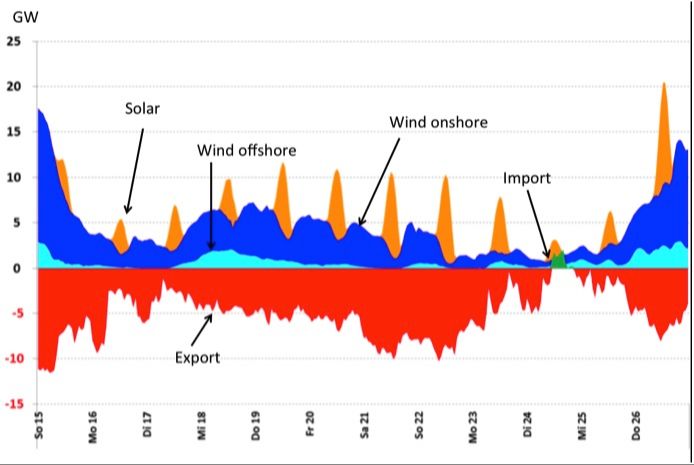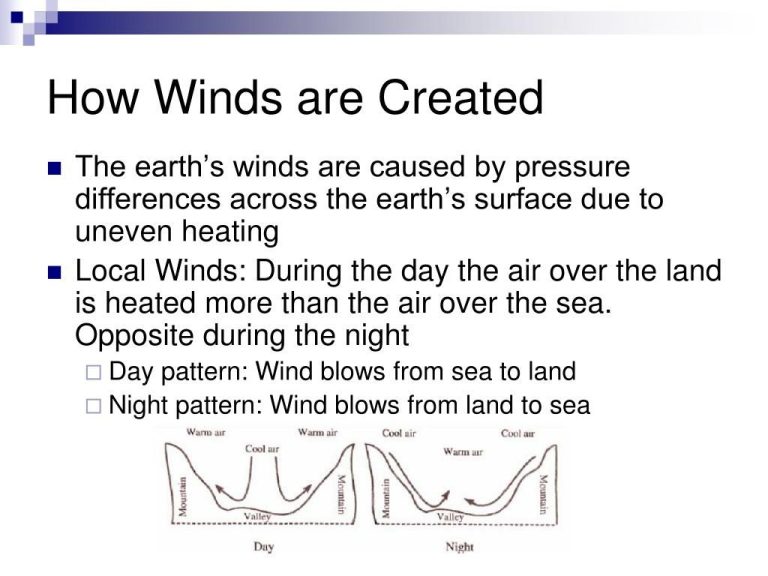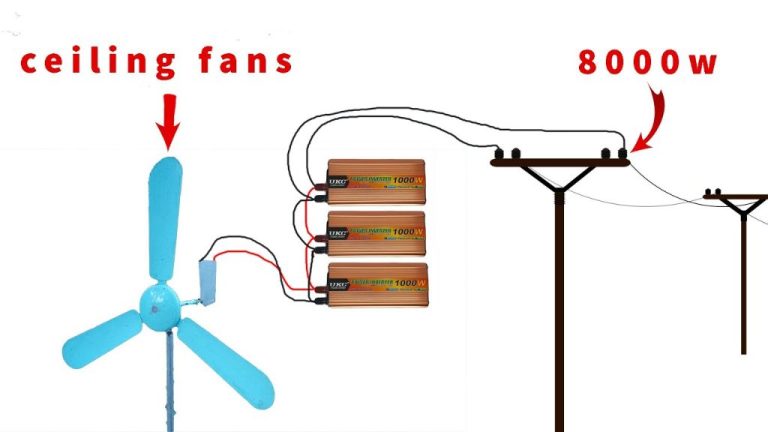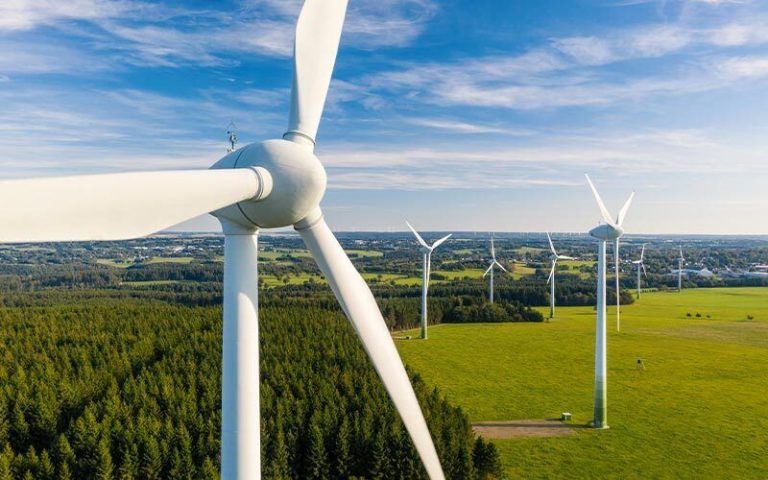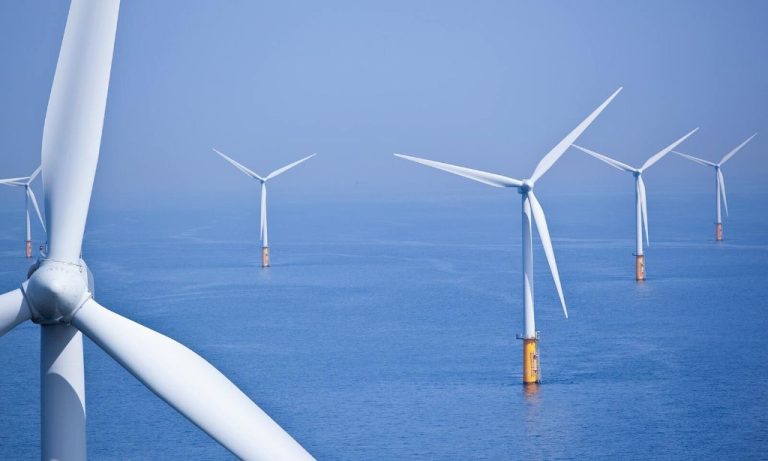Why Wind Power Pros And Cons?
Wind power has emerged as a significant source of renewable energy around the world. As of 2018, wind supplied 5% of global electricity demand, and total installed capacity reached 597 GW.[1] While the benefits of wind power, such as its low emissions and falling costs, are promising, it also comes with drawbacks like land use issues and grid integration challenges.
This article examines the main pros and cons surrounding wind power to assess its overall merits and long-term outlook. Key advantages include wind’s low operating costs, zero emissions, and rapid deployment potential. However, there are also concerns around intermittent output, noise pollution, and impacts on wildlife. On balance, wind power delivers valuable clean energy and environmental gains that can outweigh the downsides with careful project siting and grid planning.
Pros of Wind Power
Wind power has several key advantages that make it an attractive renewable energy source. First, wind is an infinite resource that will never run out, unlike fossil fuels Advantages and Challenges of Wind Energy – Energy.gov. Harnessing the wind to generate electricity does not deplete resources or produce greenhouse gas emissions.
Wind power also has very low operating costs once turbines are installed, as the fuel source is free. This helps reduce reliance on imported fossil fuels and improves energy security All the Benefits of Wind Power – Enel Green Power.
The growth of the wind industry creates new jobs in manufacturing, construction, operations, and maintenance. The U.S. wind workforce employed over 120,000 full-time workers in 2021 Advantages and Challenges of Wind Energy – Energy.gov.
Because wind turbines produce no carbon emissions during operations, wind energy helps lower greenhouse gas emissions and reduce the impacts of climate change. Each megawatt-hour of electricity generated by wind replaces fossil fuel produced energy, avoiding 0.8 metric tons of carbon emissions Wind Energy Benefits – NREL.
Cons of Wind Power
While wind energy does provide many benefits, there are also some drawbacks to consider. Some key cons of wind power include:
High upfront costs – Constructing wind turbines and infrastructure is very capital intensive. The upfront costs of wind projects are significantly higher than fossil fuel plants. According the U.S. Department of Energy, the cost of wind power ranges from $0.04 to $0.06 per kWh over the lifetime of the turbine, compared to $0.045 per kWh for coal or natural gas plants.[1]
Intermittent power generation – The wind is variable and does not blow all the time, so wind power can be intermittent. Output can fluctuate depending on wind patterns and speeds. Additional infrastructure like energy storage or excess capacity is needed to compensate during low wind periods.[2]
Potential noise pollution – The rotating blades can generate noise, which may be an annoyance for people living nearby. Careful turbine siting can minimize noise impact.
Aesthetic impacts on landscapes – Some people feel wind turbines are unattractive and detract from natural scenery. However, perceptions on visual impact tend to improve after project completion.
Harm to wildlife – Birds and bats sometimes collide with turbines and may be at higher risk. However proper site selection, impact studies and monitoring can greatly reduce harm to wildlife.
Overall there are advantages and disadvantages to wind power that must be carefully evaluated for any project site. With thoughtful planning many of the cons can be minimized.
[1] https://www.energy.gov/eere/wind/advantages-and-challenges-wind-energy
[2] https://www.turbinegenerator.org/wind/advantages/disadvantages/
Economic Impact
The economics of wind power have improved substantially in recent years, making it more cost competitive with traditional energy sources like coal and natural gas. However, wind power does come with considerable costs. According to a 2020 report from the Renewable Energy Foundation (REF), the capital costs for onshore wind power in Europe and the US range from $1400-1700 per kW of capacity (Wind Power Economics – Rhetoric and Reality). Operating costs add another $40-60 per MWh. In comparison, gas and coal plants have capital costs of $800-1000 per kW with operating costs of $30-50 per MWh.
Wind projects rely heavily on government subsidies and incentives like production tax credits to be economically viable. Analysis shows wind power would be far more expensive without these subsidies – as much as 300% higher than current electricity prices (Wind Power Economics – Rhetoric and Reality). However, wind advocates argue that fossil fuels also benefitted from decades of government support early on.
In terms of impact on electricity prices, adding large amounts of wind power can put upward pressure on rates. But how much rates increase depends on the region and extent of wind generation. One study found a 10% increase in wind power share correlated to a 1-5% increase in electricity prices (The Economics of Wind Power).
Environmental Impact
While wind power generation reduces carbon emissions considerably compared to fossil fuel power plants, concerns remain over wildlife and land use effects. According to the U.S. Energy Information Administration, wind energy helps avoid harmful air pollution by offsetting the need for energy from fossil fuels. Wind plants emit virtually no carbon dioxide, sulfur dioxide, or nitrogen oxides (U.S. EIA, 2022).
However, wind turbines may negatively impact wildlife such as birds and bats through collisions. The U.S. Department of Energy reports that U.S. wind facilities kill between 140,000 and 500,000 birds annually, but notes that these impacts are small compared to other human-related sources (U.S. DOE, 2022). Solutions include careful site selection, radar-based systems to temporarily shut down turbines when flocks approach, and identifying high-risk seasons or conditions.
Regarding land use, wind power’s footprint is small compared to other energy sources. According to the Union of Concerned Scientists, wind turbines themselves use less than 1% of the total land area of a wind farm, allowing agricultural uses like farming or ranching to continue (UCSUSA, 2013). In contrast, coal and nuclear plants require much larger contiguous land areas.
Sources:
U.S. EIA. (2022). Wind energy and the environment. https://www.eia.gov/energyexplained/wind/wind-energy-and-the-environment.php
U.S. DOE. (2022). Wind energy’s potential effects on wildlife and the environment. https://windexchange.energy.gov/projects/wildlife
UCSUSA. (2013). Environmental impacts of wind power. https://www.ucsusa.org/resources/environmental-impacts-wind-power
Grid Reliability Concerns
One of the main concerns with wind power is the intermittency challenges it poses for grid reliability. Unlike fossil fuel plants that can provide steady baseload power, wind turbines only generate electricity when the wind is blowing within certain speeds. This can create fluctuations in power supply that don’t match energy demand at all times.
To maintain grid reliability with high levels of wind power, backup power sources are needed during low-wind periods. Natural gas plants are often used for this purpose, but energy storage solutions like batteries and pumped hydro storage can also help fill gaps. According to a 2021 study published in Nature Communications, the most reliable U.S. grids with wind generation require 70-90% wind power coupled with energy storage and baseload sources (Tong, 2021).
Advancements in smart grid technology, forecasting tools, demand response capabilities and transmission expansion are also helping to balance variable wind energy and bolster grid reliability. The National Renewable Energy Lab (NREL) has an extensive wind power reliability research program focused on continuing to find solutions (NREL, n.d.). With the right investments and policies, wind power can be effectively integrated onto the grid at higher levels while maintaining reliability standards.
Public Opinion Trends
Public support for wind power has been consistently high over the past few decades, though some shifts have occurred. According to a 2021 Pew Research Center survey, 77% of U.S. adults favor expanding wind turbine farms, down slightly from 85% in 2016 (Pew Research Center, 2021). While a large majority still support wind power expansion, Republican support has dropped more significantly from 75% in 2016 to 61% in 2021. There are also demographic differences, with younger adults, Hispanics, and Democrats among the most supportive of wind power.
Some opposition remains driven by concerns over noise, views being obstructed, and effects on wildlife. Industry groups have worked to address these issues by pushing for setback requirements between turbines and homes, minimizing noise, and conducting environmental impact studies. More community outreach and emphasizing the economic benefits of wind projects for local areas may also help garner support. Overall, public opinion trends show wind power continues to be viewed favorably by a substantial majority of Americans.
Growth Projections
The U.S. Department of Energy projects strong growth for wind power capacity in the United States over the next decade. According to the Projected Growth of the Wind Industry From Now Until 2050, wind power capacity is forecasted to reach over 500 GW by 2050, up from 122 GW at the end of 2020. Much of this growth is expected to come from larger and more efficient wind turbines, with the average capacity rising 7% from 2021 to 2022 to 3.2 MW according to the U.S. Department of Energy.
Global wind power capacity is also expected to grow substantially in the coming decades. According to the Global Wind Energy Council, worldwide wind power could reach 2,110 GW by 2030, up from 743 GW at the end of 2021. However, realizing these growth projections depends on addressing constraints such as grid integration, transmission infrastructure, and public acceptance issues in some regions.
Offshore wind represents a major opportunity, with global offshore installations projected to rise from 35 GW in 2021 to 228 GW by 2030. Europe currently dominates offshore wind, but major markets like the U.S., China, and India are ramping up investments and targets. With technological improvements and larger turbines, offshore wind costs have fallen dramatically, making it more competitive.
Policy and Regulations
Government policies and regulations have played a major role in supporting the growth of wind power in the United States. Key policies include subsidies, incentives, renewable energy standards, and permitting regulations.
The federal government provides subsidies like the production tax credit (PTC) which gives wind farm owners a tax credit per kilowatt-hour of energy produced (Windexchange). These types of financial incentives make wind power more economically viable. There are also renewable portfolio standards mandating utilities to source a percentage of their electricity from renewable sources like wind and solar. Over half of U.S. states have these standards (NREL).
Permitting and siting regulations can impact wind farm development. Wind farms often require permits from local, state, and federal agencies before construction. Environmental impact assessments and zoning approvals are typically needed. Siting large wind turbines also involves tradeoffs like weighing impacts on birds and bats versus clean energy benefits (Wikipedia). Regulations aim to balance these complex issues.
Conclusion
Overall, wind power has both advantages and disadvantages. “Wikipedia Quotation Marks” Some of the key pros of wind power include its renewable nature, low operating costs once installed, and minimal carbon emissions. Meanwhile, cons include intermittency issues, high upfront costs, and potential impacts on wildlife. The future outlook for wind power looks positive with projections of continued strong growth, especially as costs come down further and energy storage solutions help integrate intermittent generation. While wind may never be a panacea, it appears poised to become a major pillar of clean energy generation globally. Policies and technological advances will continue shaping the extent of its expansion. In conclusion, wind power’s pros seem to outweigh its cons for many energy consumers and producers.

